Preliminary Knowledge
A. Parts of the soroban
Let's first introduce the various parts of the soroban. Compare your soroban with the picture below.
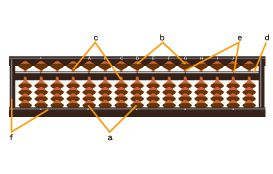 |
a | 1-unit counter | a counter that represents 1, 10, 100, 1000, etc. |
| b | 5-unit counter | a counter that represents 5, 50, 500, 5000, etc. | |
| c | rod | ||
| d | bar | ||
| e | unit point | a marker dot placed on every third rod serving as marker for setting a number. | |
| f | frame |
B. Proper posture for operating the soroban
Now look at the following pictures. Fig. A shows a proper posture as seen from the side. Hold the left end of the soroban from above with your left hand. See that the wrist or the elbow of your right arm does not touch the soroban or the desk. Fig. B is a proper posture as seen from the front. Sit slightly bending forward.
Next, use the thumb and the forefinger of the right hand to operate the soroban, closing your other three fingers lightly.
Fig. A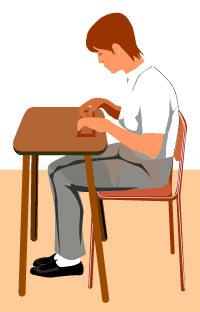 |
Fig. B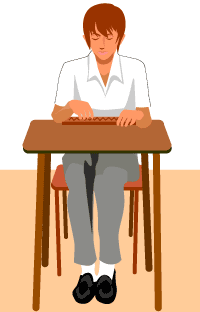 |
C. Getting ready for calculation
Before beginning, you must see that the soroban is set to zero. You can do this by slanting your soroban towards you which will move down all the counters (Fig. C). Next, level the soroban on the desk and move all the 5-unit counters up by running the forefinger of your right hand between the 5-unit counters and the bar from left to right (Fig. D). The soroban is now ready for calculation.
Fig. C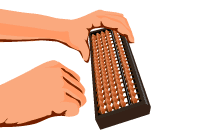 |
Fig. D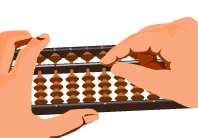 |
D. How to form numbers
| Numbers are formed by moving counters towards the bar. Numbers from 1 to 10 are shown here. | 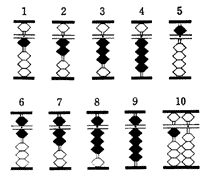 |
| 147 and 3,068 are set here. |  |
| As the above figure for 3,068 shows, you get zero on a rod when the 1?unit counters and the 5-unit counter are away from the bar. Read the numbers represented in the following figures. |  |
E. How to set and remove numbers
In putting a number on the soroban, you set or enter it. In taking a number away, you remove or clear it. In setting and removing a number, you correctly use your thumb and forefinger in the following ways.
a. Set 1-unit counters with the thumb and remove them with the forefinger.
b. Set and remove 5-unit counters with the forefinger.
How to set and remove 1 to 9:
a. To set 1, move up a 1-unit counter with the thumb (Fig. E).
b. To remove 1, move down a 1-unit counter with the forefinger (Fig. F).
c. Set and remove 2, 3, and 4 in the same way.
Fig. E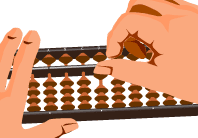 |
Fig. F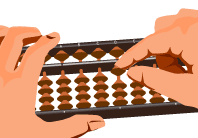 |
d. To set 5, move down a 5-unit counter with the forefinger (Fig. G).
e. To remove 5, move up a 5-unit counter with the forefinger (Fig. H).
Fig. G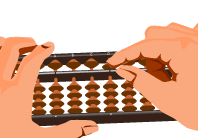 |
Fig. H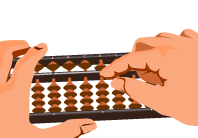 |
f. To set 6, enter a 5-unit counter with the forefinger and a 1-unit counter with the thumb at the same time (Fig. I), as if pinching them.
g. To remove 6, first move down a 1-unit counter with the forefinger (Fig. J). Next, move up a 5-unit counter with the forefinger (Fig. K).
h. Set and remove 7, 8, and 9 in the same way.
Fig. I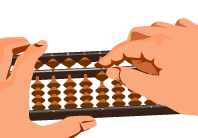 |
Fig. J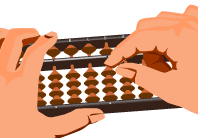 |
Fig. K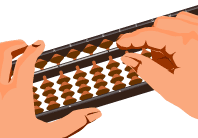 |
Now, practice setting and removing 5, 6, 7, 8, and 9, five times respectively.
Exercises
Practice setting and removing the following numbers, paying special attention to numerical places, such as 1, 10, 100, 1000, etc.
|
23
|
34
|
45
|
125
|
601
|
|||||
|
719
|
286
|
400
|
1278
|
1050
|
|||||
|
3560
|
4902
|
5867
|
2359
|
9300
|